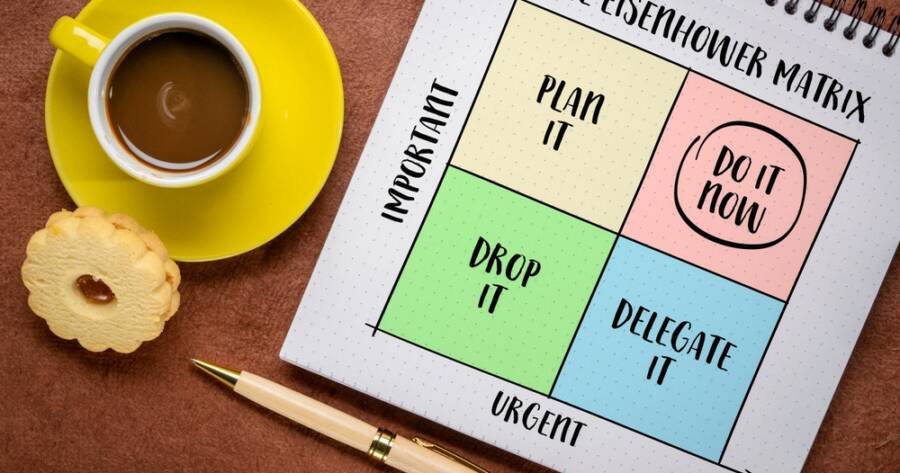Every day, we’re hit with a long list of tasks—some important, some urgent, and many that just feel busy. It’s easy to get overwhelmed or waste time on things that don’t really matter. That’s where the Eisenhower Matrix comes in. Inspired by President Dwight D. Eisenhower, this simple but powerful tool helps you sort tasks by urgency and importance. It’s a method that many CEOs and high-performers use to stay focused and make smart decisions under pressure.
Understanding the Four Quadrants
The Eisenhower Matrix divides tasks into four categories—or quadrants—that help you clearly see what to do first, what to delay, what to delegate, and what to ignore altogether.
Here’s how it breaks down:
- Quadrant 1: Urgent and Important – These tasks demand your immediate attention and have significant consequences. Think: work deadlines, client issues, or family emergencies.
- Quadrant 2: Important but Not Urgent – These are your long-term goals and personal development activities. They don’t scream for your attention, but they’re the most valuable in the long run.
- Quadrant 3: Urgent but Not Important – These feel pressing but don’t truly matter. Emails, interruptions, and some meetings fall here.
- Quadrant 4: Not Urgent and Not Important – These are the distractions. Social media scrolling, mindless tasks, or anything that wastes your energy without adding value.
Once you start sorting your day this way, you’ll stop reacting to everything and start making conscious choices about what deserves your energy.
Why CEOs and Leaders Swear By It
People in leadership roles often deal with constant demands and fast-changing priorities. What makes the Eisenhower Matrix so useful for them is its ability to quickly highlight what actually moves the needle. Instead of just doing more, leaders want to make better decisions.
By focusing on Quadrant 2, they create time for planning, vision-building, and personal well-being—things that prevent future emergencies from even happening. On the flip side, they also learn to ruthlessly eliminate or delegate tasks from Quadrants 3 and 4, freeing up space to focus on what matters most.
This is the kind of clarity that helps leaders avoid burnout, stay on track, and keep their teams aligned.
How to Use the Matrix in Daily Life
You don’t need a fancy app to use the Eisenhower Matrix. A notebook, whiteboard, or even a sticky note can do the trick. Here’s how to start:
First, at the beginning of your day or week, list every task you’re responsible for. Don’t filter—just write it all down. Then sort each one into the four quadrants. Ask yourself:
- Is this urgent?
- Is this important?
- What would happen if I didn’t do this?
The act of sorting is powerful on its own. You’ll probably be surprised how many tasks you can postpone, outsource, or skip entirely once you see them in context.
If you want a digital solution, many to-do list apps now include templates based on the Eisenhower Matrix. Some even allow you to tag tasks by quadrant and track time spent in each.
Shifting Your Focus to Long-Term Wins
The most successful people spend more time in Quadrant 2—the not urgent but important zone. These are things like regular exercise, skill-building, goal setting, deep work, and relationship development. They may not have immediate deadlines, but they build the foundation for a more productive and meaningful life.
The trick is to schedule these activities as if they were urgent. Block time for them. Treat them with as much importance as a meeting with your boss. That’s how you build a future where fewer fires need putting out.
Over time, the better you get at living in Quadrant 2, the less time you’ll spend reacting to emergencies in Quadrant 1.
Don’t Just Work—Work with Purpose
The Eisenhower Matrix isn’t just a productivity trick—it’s a mindset shift. It teaches you to stop reacting to what feels urgent and start acting on what truly matters.
When you apply it regularly, you’ll feel less busy but more productive. You’ll stop chasing your to-do list and start leading your time, your work, and your goals like a CEO. Start with one day. Sort your tasks. And take back control of your time, one quadrant at a time.

